It can be a downright giddy feeling when you see the lead information come piling in. That ebook, webinar, or landing page knocked it out of the park, and you find yourself with a long list of names that you’re excited to convert.
And then… nothing really happens. You land a few new customers, but everyone else seems to trickle off.
All that hard work that went into generating those leads seems to go down the drain, and you’re left scratching your head, wondering why.
We’ve all been there, but it doesn’t make it any less frustrating. That’s why it’s so crucial to understand why your leads aren’t converting—when you do, you can take steps to improve lead conversion rates moving forward.
When you’re struggling to convert your leads, there’s a good chance that at least one of seven reasons may be the culprit.
In this post, we’re going to take a look at the seven most common reasons your leads aren’t converting and how to improve lead conversion rates with a few quick troubleshooting tips.
1. You Aren’t Qualifying Your Leads
Not every person who chooses to download your Ultimate Guide or take advantage of a free template that you have available will become a customer. In order to focus on the people who could become customers, though, you’ll want to qualify your leads.
Qualifying your leads is the process of assessing new leads for their potential to convert. A busy real estate agent, for example, may qualify leads by having them work with a mortgage broker before taking them to look at homes. They know how much the lead has to work with in terms of budget, and they know they’re serious about the process.
How to Qualify Your Leads
Think about what information would help with this and what might make a lead more high-value or high-intent than others. For a marketing agency, you might ask how much the client is spending in monthly ad spend, and a dog rescue would ask about whether the family has a fenced-in home and has been actively looking for a pet.
You’ll also want to remember to not only make an effort to qualify leads but to understand the difference between unique types of qualified leads.
SaaS companies, for example, will typically have the following types and stages of leads depending on their go-to-market strategy:
- Marketing qualified leads (MQLs), which are leads that are qualified by the marketing team. The marketing team can tell you which lead magnets users downloaded, for example, or which landing pages they engaged with. Fit and activity are both taken into account.
- Product qualified leads (PQLs), which are leads that are qualified by using the product itself. They’ve signed up for a free trial, for example, or are already using your software but seem to be interested in an upgrade. PQLs are easily qualified by your sales team.
- Sales qualified leads (SQLs), which are leads qualified by your sales team after moving through the pipeline. Your sales team has confirmed they’re a good fit for a sales opportunity.
Breadcrumbs can help you identify leads at each individual stage with our detailed contact scoring software.
Each contact is given an alphanumeric score based on both their fit and activity so that your sales team knows when (and even how) to act. These scores are reflective of your individual GTM motion and the indicators of value and intent that are relevant to your specific business.
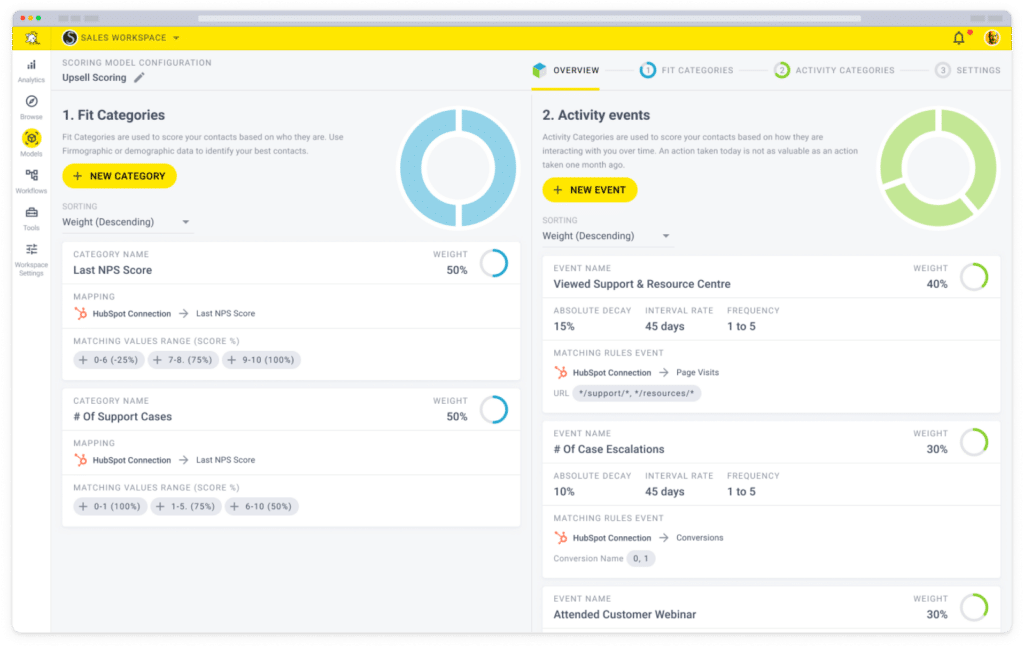
Users who are opening welcome emails but failing to engage with the tool, for example, are hardly a PQL, and they may need some extra early support. Those who are approaching the end of their free two-week trial and have used it daily, on the other hand, are high-engaging PQLs that are ready for a competitive offer from the sales team.
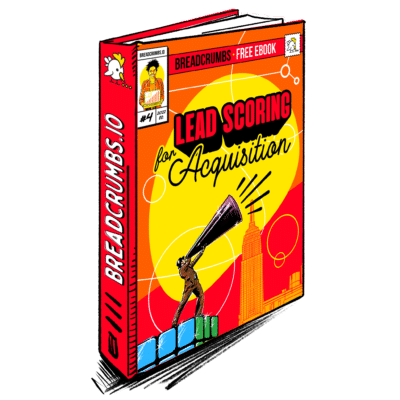
Ebook
Lead Scoring for Acquisition
Learn how to use lead scoring to find more demos, product signups, and sales opportunities.
2. Your Lead Funnel Isn’t Narrow Enough
Lead funnels often involve multiple steps, each designed to help your target audience learn more about you (and convince them that they need your tool!) until they’re ready to connect.
A lot of businesses cast as wide of a net as possible, focusing exclusively on the total number of new leads. This can actually backfire, however, because you’re spending so much time trying to appeal to everyone that you’re failing to really make a solid impression on your target audience.
Let’s say, for example, I create a lead magnet for my content writing business.
I create and promote a checklist about how to optimize your blog for SEO. While this is useful, and it would attract some of my target audience (small businesses who don’t know where to go for content marketing and SEO and who would then realize they’d rather outsource it), it will also attract people who have zero interest in hiring me. This might include other freelancers and businesses who are on too tight of a budget to actually outsource.
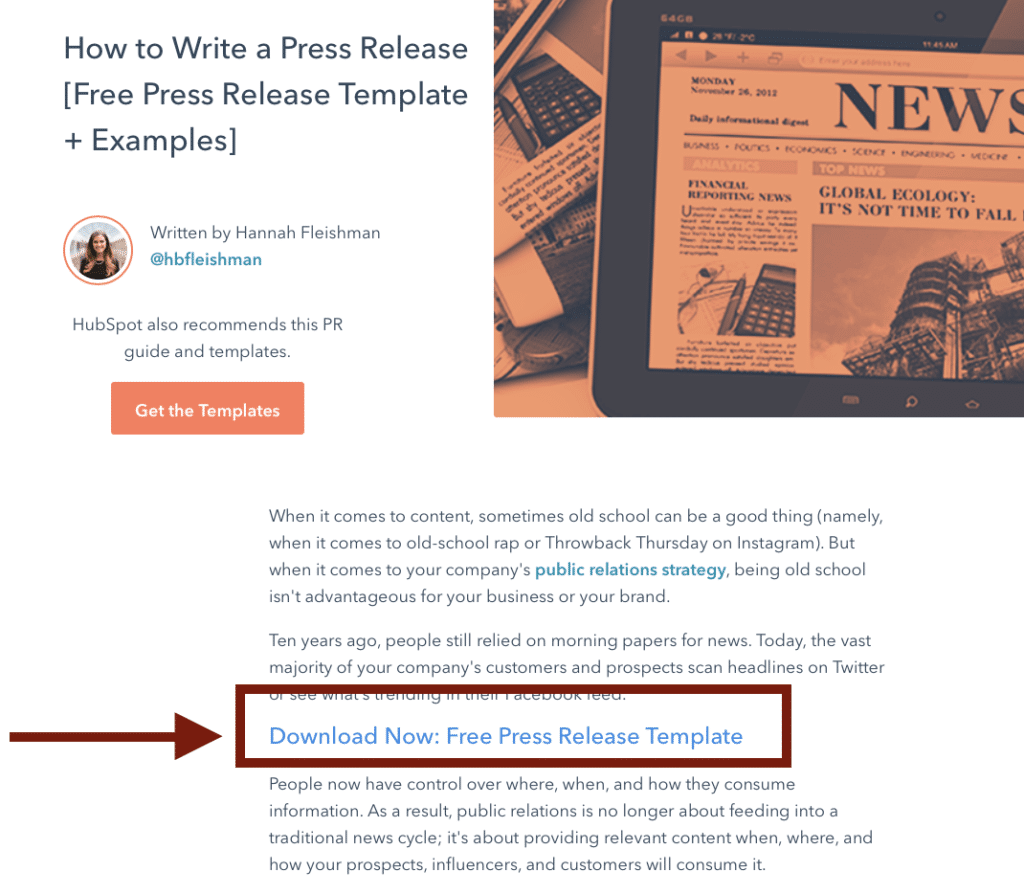
If your lead funnel isn’t narrow enough, you’ll likely be attracting plenty of leads when you’re offering free resources that were never going to convert. This can be an enormous waste of time, effort, and even money—especially considering you could be creating resources that your target audience would actually convert on.
The fix is simple; take time to make sure that your lead offers are extremely relevant to your target audience and only your target audience.
Consider what would be most valuable to them, and focus on that. This will help you actively attract the right users, and you won’t spend as much time pursuing the wrong ones.
3. You Aren’t Engaging Your Leads Quickly Enough
Sometimes, you really need to strike while the iron is hot.
If someone gets in touch about test driving a car with a dealership, for example, and it takes you two weeks to return the call, guess what? There’s a solid chance that by the time you’re in touch, they’ve already reached out to another dealership in the area and purchased.
It’s crucial to make sure that you’re responding quickly to engage users right away. And by right away, we mean that they should get an autoresponder welcome email the second they send that lead form or sign up for your email list.
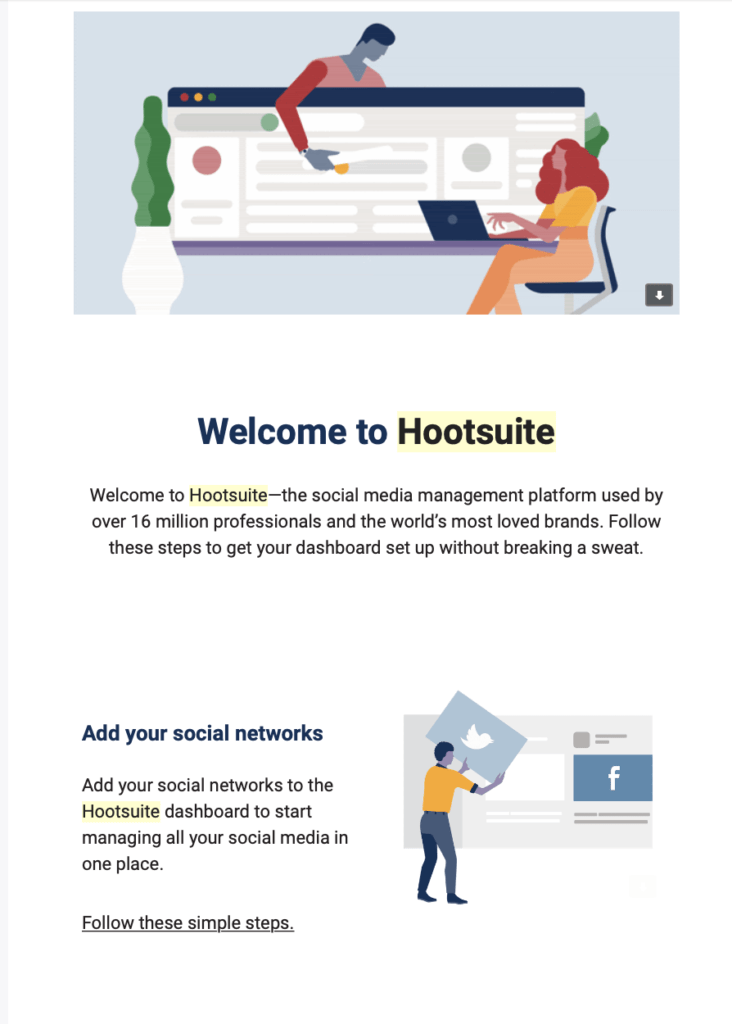
Thank users for subscribing, and let them know any key information that they’ll need (whether that’s about when you’ll follow up, about product care, or where to go to set up a demo with your team).
You can have a welcome series so that this information will be spread out slowly over several days. And if it’s a product that requires a personal reach-out via phone or email, do what you can to make sure that happens within one business day just to check in.
This is another area where Breadcrumbs can help. Each score tells you how “hot” a lead is (or how likely they are to be a good fit for your product or service). Breadcrumbs factors in both frequency and recency of actions taken, unlike most other lead scoring tools.
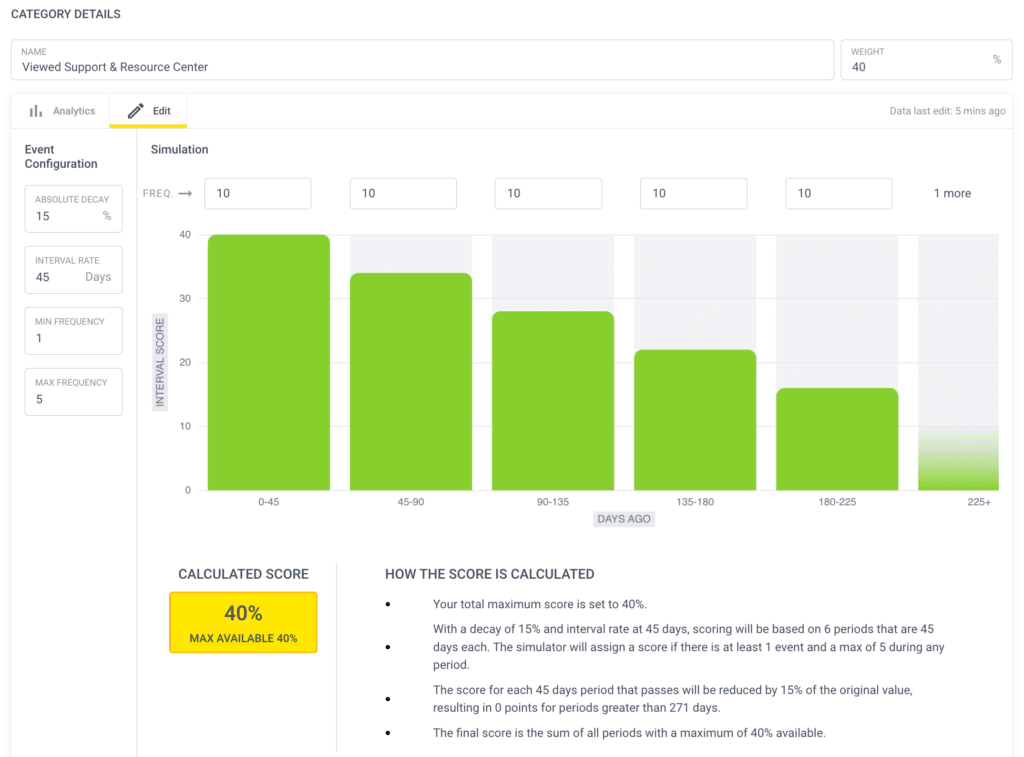
You can customize the rate of decay scores get for different types of actions, making it much easier for your sales team to understand who is ready to be engaged with now so you can reach out accordingly.
4. You’re Pushing for the Conversion Too Quickly
Speaking from experience: Perhaps the only thing some customers dislike more than a neglectful salesperson is an overbearing one.
If you have a personal account manager who is reaching out and trying to push for a hard conversion immediately after a lead signs up for a lead magnet or reaches out for information, it’s too aggressive and too soon. While some may convert, they were one of the few who were already ready. The vast majority of your audience will need more time to see what you have to offer and think over their options.
If you own a gym, for example, and you’re attracting users with a free workout, you don’t want to hit them with a bunch of messaging to actually convert right after they sign-up for the workout and they haven’t even had a chance to come in. Instead, sharing information about what they can expect and a reminder to come see you soon is the way to go.
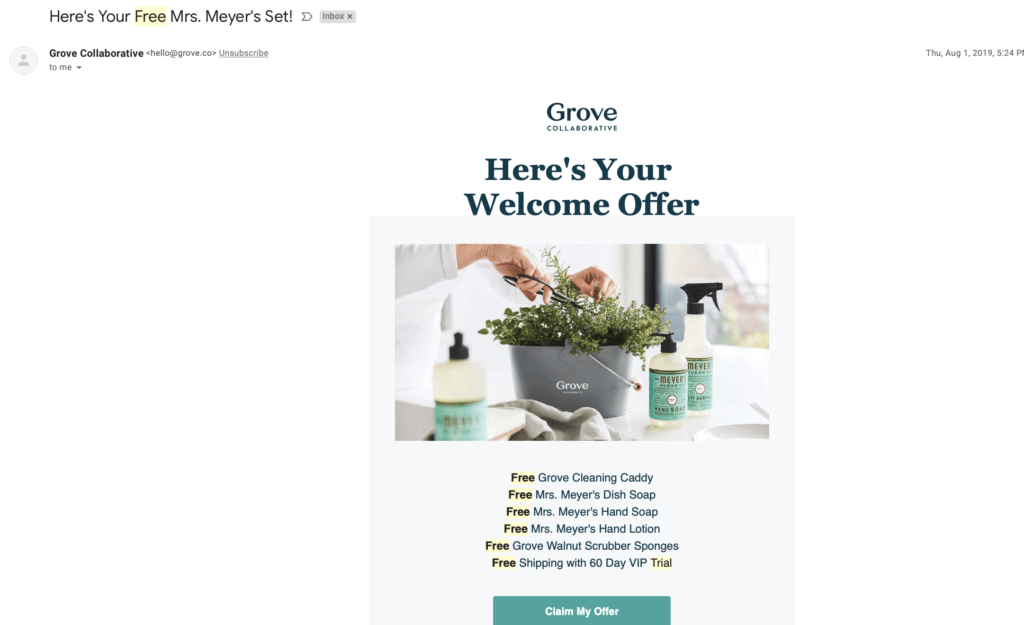
Focus on relationship building, freebies, and information sharing for your first interactions post-lead-sign-up. This will give you the chance to nurture the lead more and overcome objections. Trust us; if they decide they want to convert, they’ll do so without prompting.
Again, Breadcrumbs can help you here. We can help you track which actions individual users are taking and how often. How responsive are they? When did they last engage? What specific events are tied to their account?
Someone who has filed multiple customer support tickets and has disengaged from the tool, for example, is someone who needs a customer service agent to come in and repair the situation; they don’t need aggressive upsells for a higher tier of your SaaS plan, and very well could disengage altogether if you try.
Breadcrumbs can help you determine when you should try to push for each type of conversion, including the initial sale, upselling, cross-selling, and re-engagement.
5. You’re Failing to Make Your Value Offer Clear
Let’s say I’m in the market for a keyword research tool that will help me improve the content I’m writing for my clients. I sign up for a webinar about keyword research from a tool that I think could help me… but then none of the following messaging is able to explain why their tool is any better than what Google’s Keyword Planner can do for free or what a competitor can do for much less.
Am I going to convert? No. Even if it’s the top-of-the-line tool, the marketing after I signed up as a lead dropped the ball and neglected to tell me why that tool was valuable over anything else out there or even valuable to me as a customer in general.
Your value offer needs to be crystal clear. What is it that you’re bringing to the table? Can your SaaS tool offer new features, a better interface, or improved customer support? Why should people go with you over your direct competitor?
If you aren’t making your USP and value offer extremely clear, users won’t see it. This can cause them to drop off and check out your competitors, who are simply better at explaining why customers should work with them.
A great example is the 9Round boxing gym. They offer a 30-minute workout, just like multiple other studios around them do. The difference, though, is that there aren’t set class times; people can come and enter in the next three-minute cycle at their convenience. This is wildly appealing to people with busy or chaotic schedules, and if the company neglects to hit that messaging home, they may lose out on valuable customers.
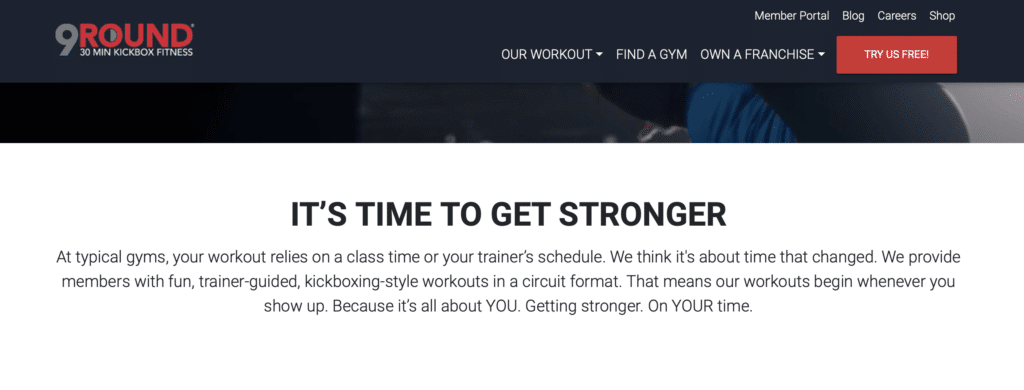
In your follow-up communication, make sure that you’re going out of your way to highlight how what you’re selling is directly valuable to your target audience. Think about their specific pain points and their needs and how your product or service can help solve that.
6. Your Customers Don’t Have Enough Information
Businesses that spend all their time and energy focusing on the build-up to the lead funnel often forget that people who become leads aren’t automatically sold on becoming customers. A lot of times, they’re filling out lead forms to request more information or to have a free trial.
In many cases, your leads may need more. Someone might request a test drive of a car, for example, but still need a lot more information about cost, warranties, safety ratings, and resale value before they ever make a decision.
Businesses that offer services or software should reach out and ask if the clients have any questions. SaaS companies should always offer free demos and/or trials, especially for enterprise-grade accounts. It’s also a good idea to send product or service information, including what the customer can expect or how to get the most out of whatever they’re purchasing.
Again, this is where looking at those different types of leads and knowing how to push them from one stage to the next is crucial. A marketing-qualified lead (MQL) is a great start, but they’re much less likely to convert than a product-qualified lead (PQL) and a sales-qualified lead (SQL).
You can use different tools like HubSpot to set up workflows designed to drive certain types of conversions—like qualifying MQLs, or nurturing existing leads—to more accurately and effectively engage users in the right way to get them to convert. This can help you give customers the information they need when they need it because you’re more easily able to identify what they might need and when.
And even better–you can integrate Hubspot with Breadcrumbs to share this data across both platforms so your sales team can evaluate where in each user’s journey they are.
Make it easy for customers to gain more information, both from your site and from you. Let them know that you’re open to any and all questions and that you’re there to help.
7. You’re Targeting the Wrong Audience
Unfortunately, if we’re consistently failing to convert the leads that we’ve worked hard to acquire, there’s a solid chance that we may be targeting the wrong audience altogether.
Let’s say that I run a catering business. I’m focused exclusively on trying to break into the niche wedding business by reaching brides and grooms, but leads aren’t converting. Many are dropping off after we inform them that we don’t have linens or chargers. For a wedding, those may seem mandatory.
Instead of targeting individual couples, I realize that targeting venues that have the amenities that I lack is the way to go. The venues that include table linens and chargers and fine china are happy to put me down as a recommended vendor, and brides and grooms have no complaints.
I also might realize that catering functions like graduation parties and company picnics are great money-makers; they’re happening on weekdays, which is typically a slow period, and they’re happy with paper plates and plastic utensils. The pay is good, the tips are always high, and absolutely no linens are needed. Extending the landing page to mention these events can be essential.
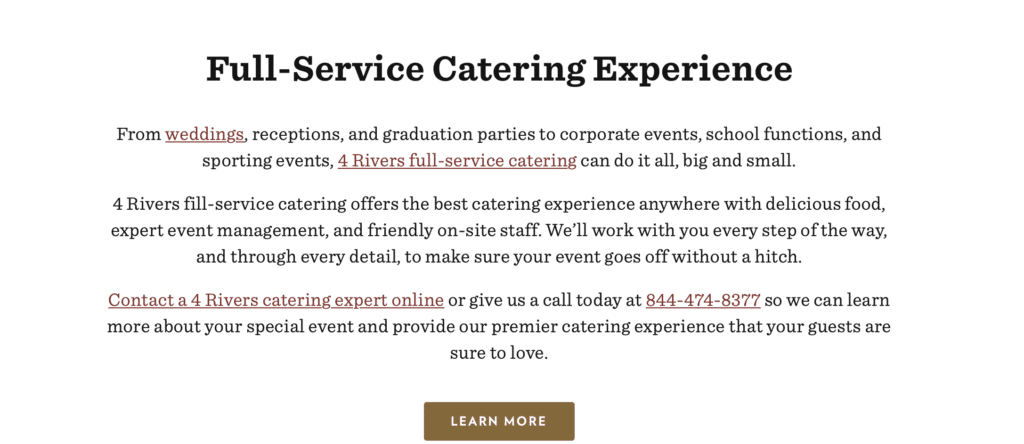
Focusing on the exactly right audience is key, and tailoring your messaging accordingly is essential. Sometimes, all it takes is niching down and adjusting your branding or messaging accordingly to line everything up. Once you’re targeting the right audience with the right offers and messaging, you might be amazed at how quickly you can improve lead conversion rates for your business.

Ebook
Ideal Customer Profile (ICP) Worksheet
Learn how to create an Ideal Customer Profile and build a successful sales strategy with this Ideal Customer Profile (ICP) Worksheet.
Breadcrumbs and Reveal can help you again here, too.
Breadcrumbs makes it easy to see what different criteria (including both fit and activity) make a potential lead a great fit for your brand. After testing different lead scoring models, it will be easy to find the right combination of factors that indicate a high-value lead. Our lead scores will make it much easier for you to identify high-value leads, pulling hopefully many needles out of your contact-filled haystack.
Reveal can also give you a much better idea of what your actual ICP is. We’ll show you who is actually becoming a high-value customer, allowing you to alter your buyer personas and your marketing campaigns accordingly. When you start targeting the right people (which means you have to know who they are first!), you’ll see your conversions increase rapidly.

How to Improve Lead Conversion Rates: Final Thoughts
If your leads aren’t converting and you’re wondering how exactly to improve lead conversion rates for your business, there’s a solid chance that one of these seven extremely common errors is at fault. Take some time to do a careful assessment of your lead funnel, your audience, your offers, and your lead prospecting process to see where things may be falling flat.
Does it seem to be something on your end or yours that’s causing the disconnect?
If you’re unsure, you can always reach out to ask if there’s any feedback they’d like to provide; many may not have anything to offer, but some can share some incredible words of wisdom.
And always remember that plenty of great leads are wonderful, but that quality does take precedence over quantity.
Your first step to increasing your conversions is by better identifying your ICP. Sign up for your free Reveal account here!
Ready for a fully-fledged solution? Book a demo for Breadcrumbs today!
